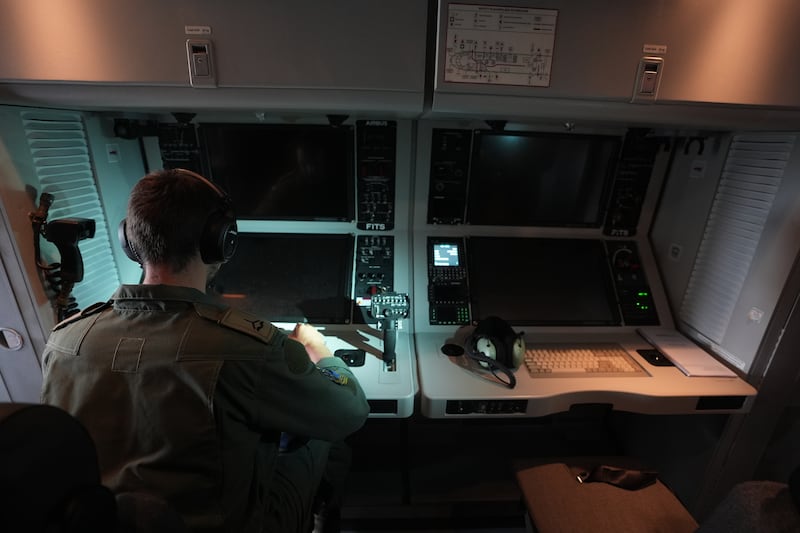It took a few minutes for the people on the deck of the Stena Line ferry to realise they were being watched from above.
Once they did, they took out their camera phones and began filming the large grey aircraft overhead. By then the plane, one of the Irish Air Corps’ two new C295 maritime patrol aircraft, was already heading away, its crew satisfied there was nothing untoward about the passenger vessel.
“This is the most sophisticated surveillance system anywhere in Ireland,” one of the crew member says before detailing the bewildering array of cameras and antennae on-board the €20 million aircraft that arrived from the manufacturers in Spain last year.
By way of demonstration, a crew member points the camera at a sailing ship 5km away. Individual passengers can be seen moving about the deck. “You can see people eating an ice-cream from 15,000ft,” a crew member says.
READ MORE
The C295′s radar detects targets from 300km away. Its sensors are so advanced it can even detect what is under the ground, something of which Ordnance Survey Ireland is keen to make use.
On Wednesday, like most days, its chief function is patrolling for fishery violations. The aircrafts cameras and GPS systems gather detailed information about the position of fishing boats, all of which can be used to bring prosecutions if needed.
It also monitors for breaches of maritime rules, including sea pollution. The sensors on board can detect a sea spill and tell the crew what substance it is.
Another key role is ensuring ships’ crews are abiding by safety regulations. If, for example, the aircraft’s crew spot a fisherman on deck without a life jacket, the maritime equivalent of penalty points will be issued to the boat’s captain.
The new aircraft, which Defence Forces Chief of Staff LieutGen Seán Clancy calls the “eyes of the State”, will also play a vital role in national security. It can operate covertly above the clouds and has advanced infrared lights that can highlight targets for special forces operations on the ground. In poor weather, a virtual reality display can be pulled down like a sun visor to allow pilots to see through the clouds.
The planes will also be used to monitor for incursions into the Irish Exclusive Economic Zone (EEZ) by ships from potentially hostile nations. The Air Corps has been involved in tracking the movement of Russian warships through Irish-controlled waters on several occasions in recent years.
“It’s the intelligence suite and the capacity for surveillance which is the big step change,” said Lieut Gen Clancy of the new aircraft.
However, crucially, even with these advanced new aircraft, the State still lacks the ability to detect what is happening beneath the waves.

This has been an issue on several occasions, including most recently last week when France, Britain and Norway sent aircraft to search for a suspected Russian submarine off the coast of Co Clare.
Despite indications the submarine was in the Irish EEZ, neither the Air Corps nor the Naval Service were involved in the operation.
Maritime threats are “growing, complex and advanced”, said the Defence Forces chief, and include threats from “cartels trying to find weak spots for people and drug trafficking”.
He said it is “very clear” Ireland has no subsurface surveillance capacity, but this area is being examined. Ireland “has to work with what we have and to work collectively. No single nation in Europe has the capacity to counter that threat”.
- Sign up for push alerts and have the best news, analysis and comment delivered directly to your phone
- Join The Irish Times on WhatsApp and stay up to date
- Listen to our Inside Politics podcast for the best political chat and analysis



















